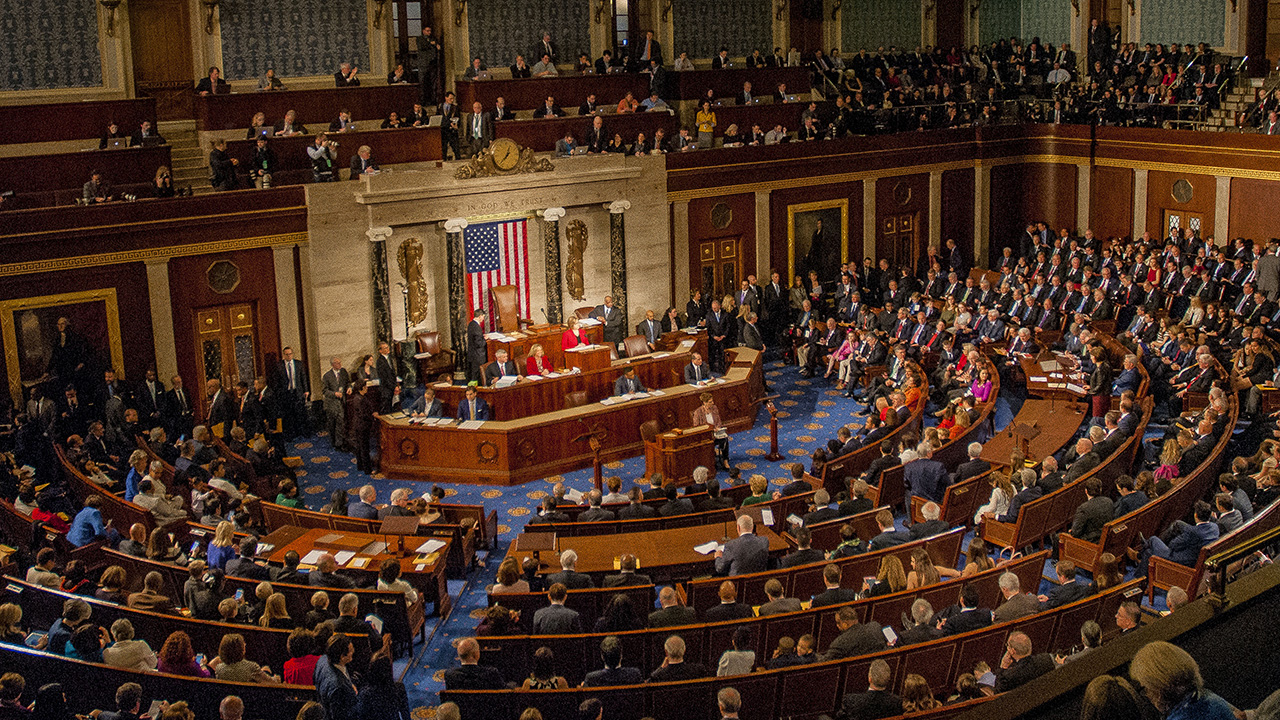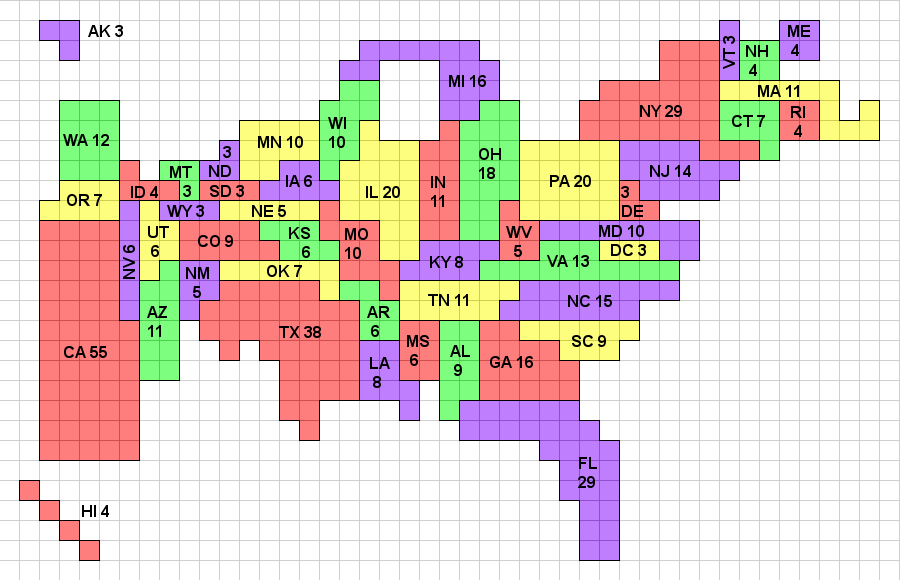The Electoral College
When Americans vote for President and Vice President of the United States, they are actually voting for presidential electors, known collectively as the Electoral College. It is these electors, chosen by the people, who elect the chief executive. The Constitution assigns each state a number of electors equal to the combined total of the state’s Senate and House of Representatives delegations; at present, the number of electors per state ranges from three (District of Columbia) to 55 (California), for a total of 538. To be elected President of the United States, a candidate needs a majority of 270 electoral votes.

How the Electoral College Works
Aside from Members of Congress and people holding offices of “Trust or Profit” under the Constitution, anyone may serve as an elector. In each presidential election year, a group of candidates for elector is nominated by political parties and other groupings in each state, usually at a state party convention or by the party state committee. It is these elector-candidates, rather than the presidential and vice presidential nominees, for whom the people vote in the November election, which is held on Tuesday after the first Monday in November. In most states, voters cast a single vote for the slate of electors pledged to the party presidential and vice presidential candidates of their choice. The slate winning the most popular votes is elected. This is known as the winner take all system, or general ticket system.
Electors assemble in their respective states on Monday after the second Wednesday in December. They are pledged and expected, but not required, to vote for the candidates they represent. Separate ballots are cast for President and Vice President, after which the Electoral College ceases to exist for another four years. The electoral vote results are counted and certified by a joint session of Congress, held on January 6 of the year succeeding the election. A majority of electoral votes (currently 270 of 538) is required to win. If no candidate receives a majority, then the President is elected by the House of Representatives and the Vice President is elected by the Senate, a process known as contingent election.

The Electoral College Today
The Constitution gives each state a number of electors equal to the combined total of its Senate membership (two for each state) and House of Representatives delegation (currently ranging from one to 55, depending on population). The 23rd Amendment provides an additional three electors to the District of Columbia. The number of electoral votes per state thus currently ranges from three (for seven states and D.C.) to 55 for California, the most populous state.
The total number of electors each state gets are adjusted following each decennial census in a process called reapportionment, which reallocates the number of Members of the House of Representatives to reflect changing rates of population growth (or decline) among the states. Thus, a state may gain or lose electors following reapportionment, but it always retains its two “senatorial” electors, and at least one more reflecting its House delegation.
